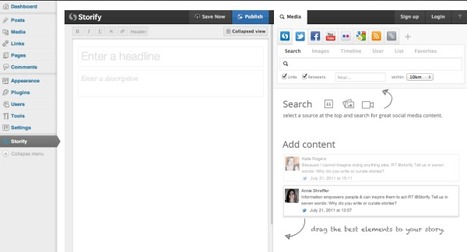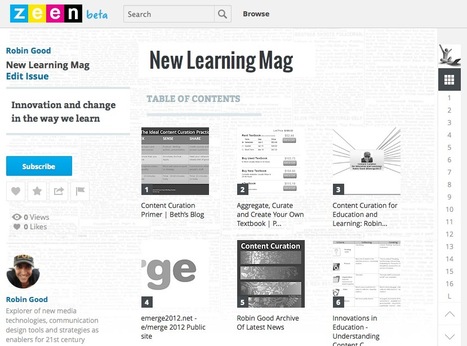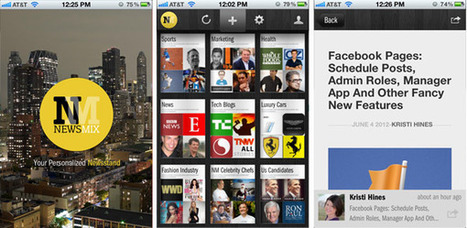Research and publish the best content.
Get Started for FREE
Sign up with Facebook Sign up with X
I don't have a Facebook or a X account
Already have an account: Login
Using curation strategies to enhance teaching and learning in education contexts.
Curated by
Learning Futures
 Your new post is loading... Your new post is loading...
 Your new post is loading... Your new post is loading...
|

Brad Tollefson's curator insight,
March 28, 2013 3:51 AM
Seems this could be used as a transmedia element. 
Kim Flintoff's curator insight,
March 31, 2013 7:54 PM
A great way to aggregate and present content to students. Or even better, flip that process and have students create their own content collections.

Brian Yanish - MarketingHits.com's comment,
August 16, 2012 8:58 AM
After receiving an invite yesterday and also gave it a try. They have a long way to go as far as a mobile user using the site to currate content.
In find when viewing a magazine the layout has to much going on around it that takes away from the content.

Poovan Devasagayam's comment,
June 20, 2012 8:51 PM
Love this article. It's straight to the point. thanks for the app recommendations. It's really useful. - Poovan
Follow me back - http://www.scoop.it/t/social-media-pronto |




















Appears to be quite a slick integratoon with Wordpress. However, the $3750 per month (min) will put a lot of people off - including me!
Storify great for content creators using WordPress.
A great plugin for your WordPress site called Storify.